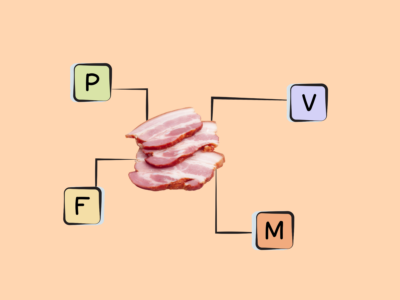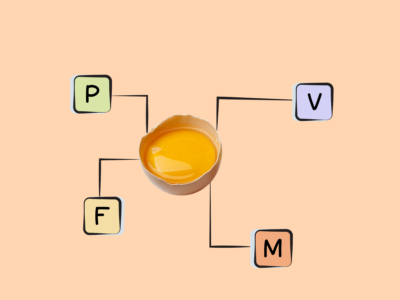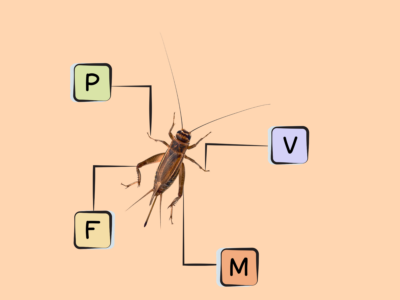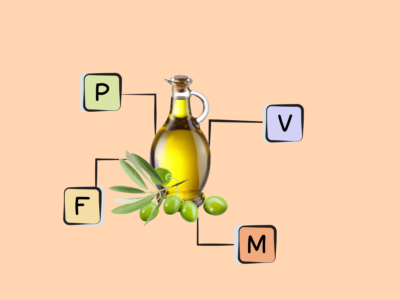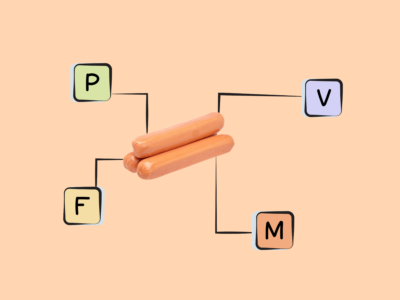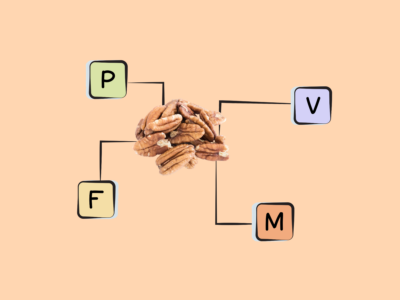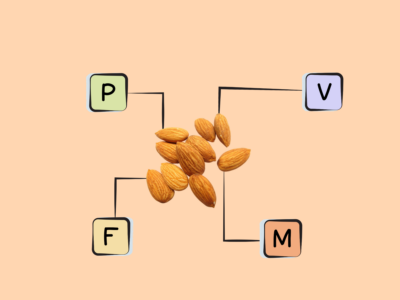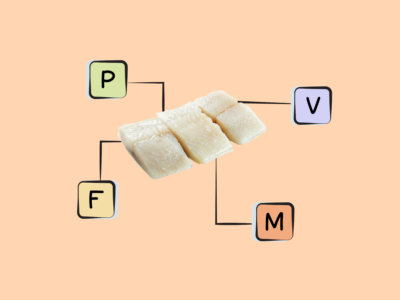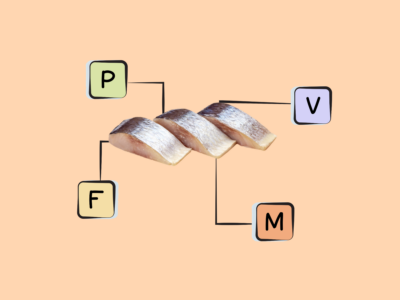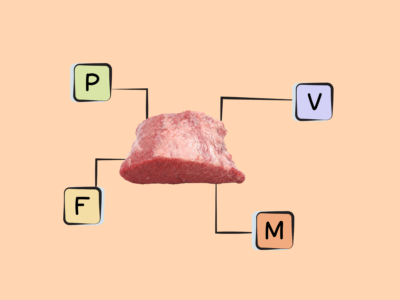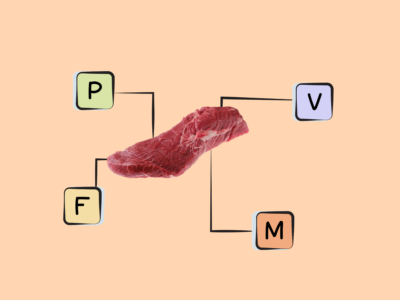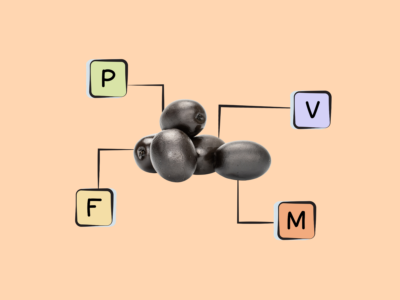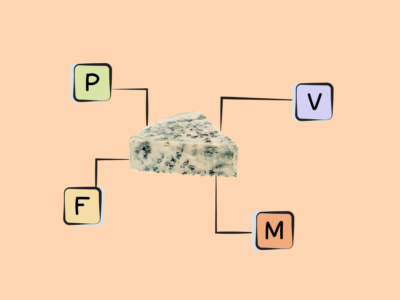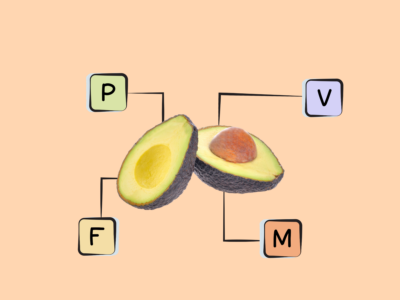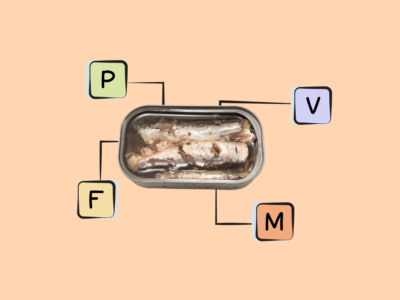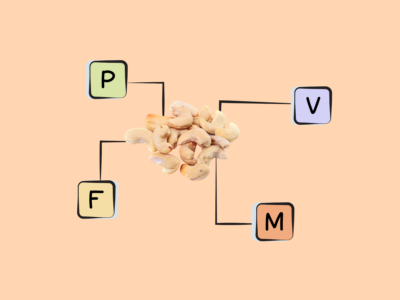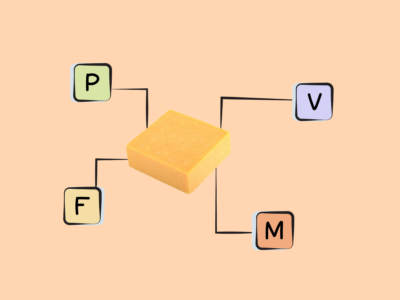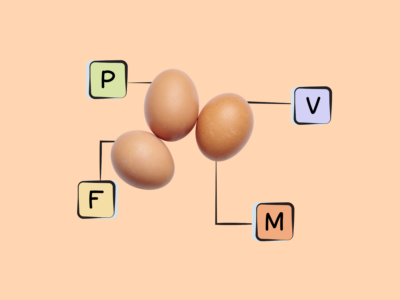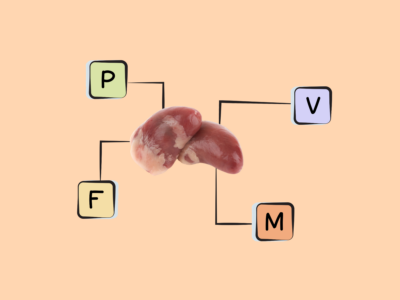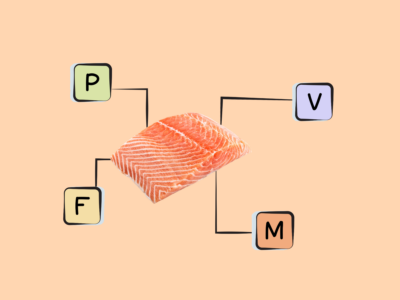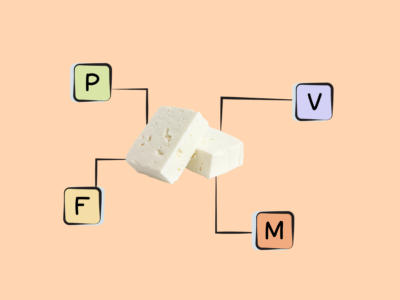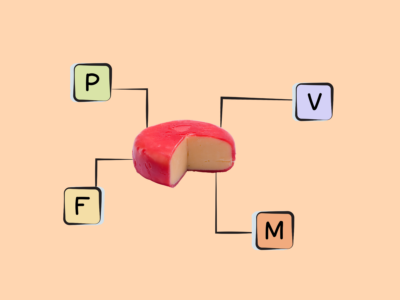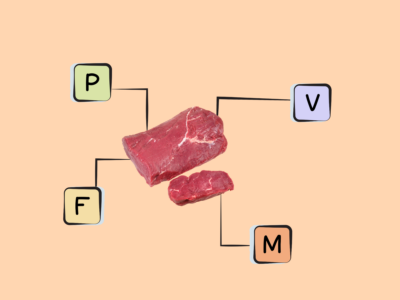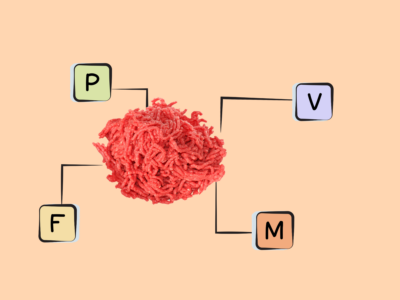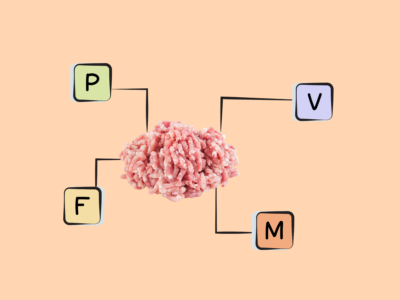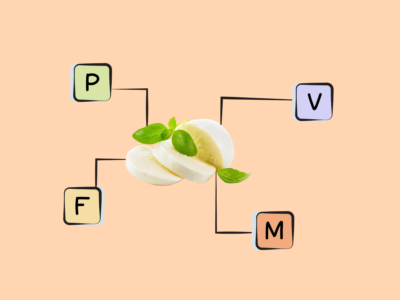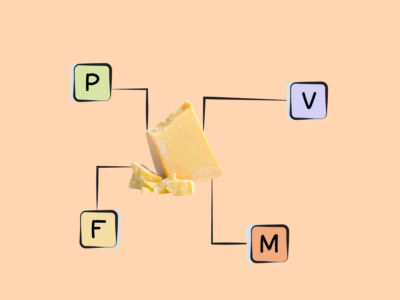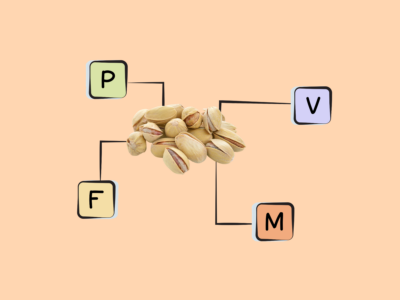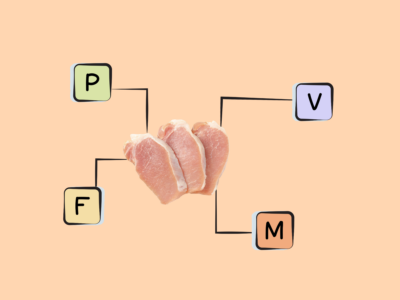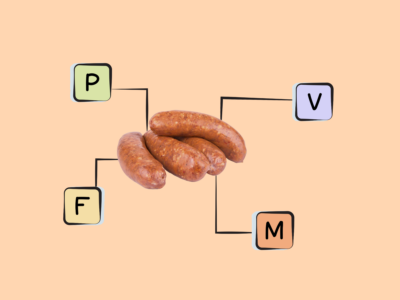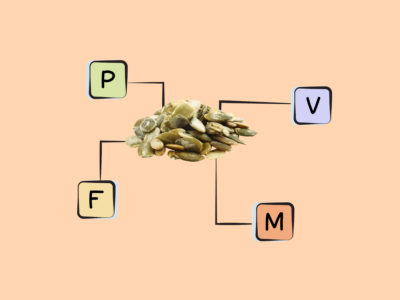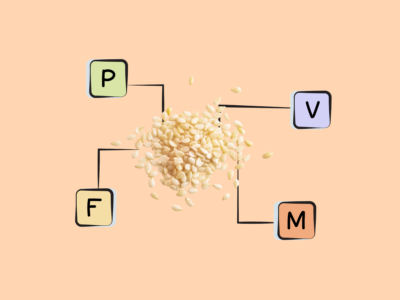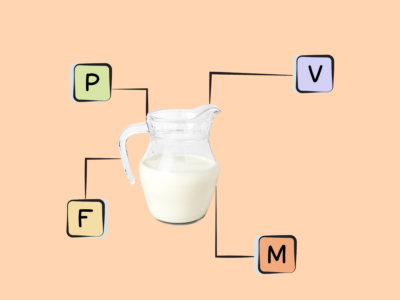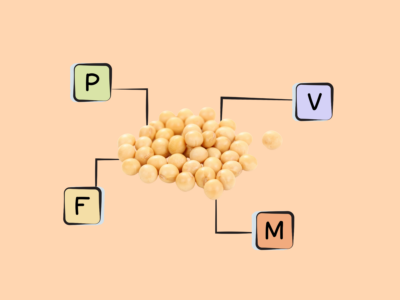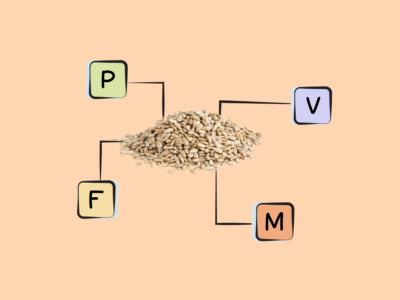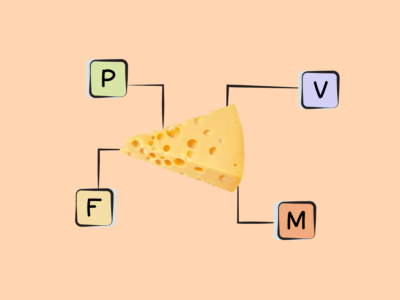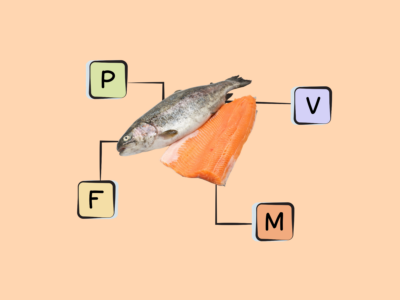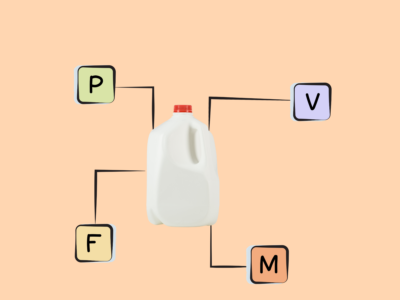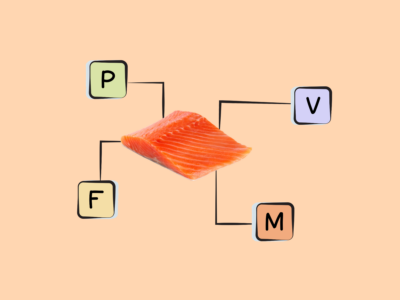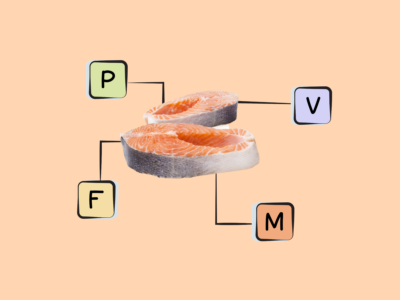Key Takeaways (expand)
- Oleic acid is a long-chain monounsaturated fatty acid that’s the most widely distributed fat in nature.
- Oleic acid makes up about half of the fatty acid content of the adipose tissue in our bodies.
- Oleic acid serves as a structural component of a number of biological compounds—including cholesterol esters and cell membrane phospholipids.
- Via its presence in cell membranes, oleic acid can directly impact cellular function by improving the cell’s antioxidant status, altering membrane fluidity, modulating gene expression involved in cytokine production, and reducing the production of inflammatory agents called eicosanoids.
- Small amounts of oleic acid can be enzymatically produced from a saturated fatty acid called stearic acid.
- Oleic acid causes a rise in circulating levels oleoylethanolamide—an oleic acid derivative that serves as an agonist of peroxisome proliferator-activated receptor α (PPAR-α), an important nuclear receptor involved in lipid metabolism.
- Oleic acid has notable benefits for cardiovascular health, including reducing cardiovascular risk factors like blood cholesterol and triglyceride levels, blood pressure, inflammation, blood coagulation, and oxidative stress, while also improving blood sugar regulation.
- Research links higher oleic acid intake to better cardiovascular outcomes and lower risk of coronary heart disease.
- Oleic acid also exhibits anti-cancer properties—inhibiting the proliferation, progression, and/or metastasis of several cancer types in vitro, and being linked to lower colorectal cancer risk observationally.
- Anti-cancer mechanisms of oleic acid are likely related to its effects on cell cycle arrest, calcium signaling pathways involved in cancer proliferation, the over-expression of oncogenes, and the Akt/mTOR pathway.
- Oleic acid has anti-inflammatory and immune-modulatory properties—including reducing the inflammatory effects of other fats, influencing immune cell proliferation, modulating the production of reactive oxygen species, and inhibiting the expression of several adhesion molecules.
- Oleic acid may benefit body weight regulation, with studies showing that oleic acid-enriched diets lead to greater decreases in central obesity, abdominal fat, body weight, and food intake.
- The oleic acid derivative oleoylethanolamide has likewise been shown to reduce hunger, spontaneous food intake, and liver fat accumulation; in fact, it has an overall protective effect against non-alcoholic fatty liver disease.
- Some evidence suggests oleic acid can increase markers related to tissue repair and promote faster wound healing.
- Oleic acid may also help protect against diabetes and insulin resistance, due to increasing insulin sensitivity, promoting the survival of pancreatic beta-cells, influencing the insulin signaling pathway, and regulating genes related to the PI3K pathway.
- Oleic acid may also help protect against diabetic retinopathy, and reduce the risk of atherosclerosis among diabetics.
- Because oleic acid is non-essential, there’s no deficiency diseases associated with inadequate intake; however, consuming low levels of oleic acid and high levels of more inflammatory fats (such as palmitic acid) may increase the risk of cardiovascular disease and diabetes.
- The best sources of oleic acid are plant oils and high-fat plant foods (such as olives, avocados, peanuts, sunflower seeds, and their oils), as well as some animal fats—especially turkey fat, chicken fat, and lard.
Table of Contents[Hide][Show]
Oleic acid is a long-chain monounsaturated fatty acid, and the most widely distributed fatty acid in nature! In fact, it’s present in at least small amounts in virtually all oils, and comprises about half of the fatty acid content of the adipose (fat) tissue in our bodies. And while omega-3 and omega-6 fats might be the most famous of the omegas, oleic is technically an omega-9 fatty acid—meaning its molecular structure has a final carbon-carbon double bond in the omega-9 position (that is, the ninth bond from the methyl end of the fatty acid). The word “oleic” comes from the Latin word oleum, which translates to “oil.”
Oleic acid plays an important role in cellular function due to its presence in phospholipids in cell membranes. Along with its well-established benefits for cardiovascular health, it may also help fight inflammation, protect against cancer, influence immune function, and even have anti-diabetes effects.
Many high-fat plant foods and vegetable oils are good sources of oleic acid, including olives and olive oil, avocado and avocado oil, palm oil, canola oil, peanuts and peanut oil, sunflower seeds and sunflower oil, pecans, macadamia nuts, sesame seeds, sesame oil, grape seed oil, soybean oil, and cocoa butter. Some animal fats are also rich in oleic acid—especially turkey fat, chicken fat, and lard (as well as fatty cuts of poultry meat or pork).
Everything You Need to Jump into Nutrivore TODAY!

Nutrivore Quickstart Guide
The Nutrivore Quickstart Guide e-book explains why and how to eat a Nutrivore diet, introduces the Nutrivore Score, gives a comprehensive tour of the full range of essential and important nutrients!
Plus, you’ll find the Top 100 Nutrivore Score Foods, analysis of food groups, practical tips to increase the nutrient density of your diet, and look-up tables for the Nutrivore Score of over 700 foods.
Buy now for instant digital access.
The Biological Roles of Oleic Acid
As a monounsaturated fat, oleic acid has one double bond between two carbon atoms in its hydrocarbon chain—hence “mono,” or one. This distinguishes oleic acid from polyunsaturated fats (which have multiple double bonds) and saturated fats (which have no double bonds). And because double bonds are vulnerable to oxidation, this molecular structure makes oleic acid less stable than saturated fats, but more stable than polyunsaturated ones.
Oleic acid serves as a component of many important biological compounds, including cholesterol esters and the phospholipids in cell membranes. Its presence in phospholipids is particularly important: once incorporated into cell membranes, oleic acid can directly and indirectly impact cellular function, including by altering membrane fluidity (which impacts signal transduction and membrane-protein interactions), improving antioxidant status (since oleic acid is less prone to lipid peroxidation and reactive oxygen species production than polyunsaturated fatty acids), decreasing the arachidonic acid content of cell membrane phospholipids (arachidonic acid being a precursor for inflammatory agents called eicosanoids), and modulating gene expression that regulates cytokine production.
Oleic acid can be produced from another fatty acid, stearic acid—a saturated fat found in meat, cocoa butter, shea butter, and a variety of other plant and animal fats. This biosynthesis occurs via an enzyme called stearoyl-CoA 9-desaturase, which helps dehydrogenate stearic acid to form its monounsaturated derivative, oleic acid. Only about 9 – 14% of stearic acid undergoes this conversion, though!
Oleic acid intake causes an increase in circulating levels of one of its derivatives, oleoylethanolamide—a high-affinity agonist of peroxisome proliferator-activated receptor α(PPAR-α), an important nuclear receptor involved in lipid metabolism. By increasing the substrate availability for oleoylethanolamide synthesis, oleic acid contributes to a number of different metabolic effects.
Nutrivore Is a Game-Changer—This FREE Guide Shows You Why
Sign up for the free Nutrivore Newsletter, your weekly, science-backed guide to improving health through nutrient-rich foods — without dieting harder —and get the Beginner’s Guide to Nutrivore delivered straight to your inbox!

Oleic Acid in Health and Disease
Consumption of oleic-acid rich foods (such as olives, avocados and their oils) is associated with diverse health benefits, including reduced risk of cardiovascular disease, type 2 diabetes, obesity, and some forms of cancer in addition to immune health benefits, reducing inflammation and improving wound healing.
Interestingly, the major trans fatty acid in the Western diet, elaidic acid, is a trans isomer of oleic acid. This means its molecular structure has the same side groups, but placed on the opposite side of the double bond. In stark contrast to oleic acid, elaidic acid has a number of detrimental health effects—including increasing the risk of cardiovascular disease, worsening blood lipid profiles, and even increasing the progression of metastatic cancer.
Oleic Acid and Cardiovascular Disease
Oleic acid is most famous for its benefits for cardiovascular health. Much of the research here was initially sparked by observations that olive oil, and Mediterranean diets that use it liberally, are associated with significantly lower rates of cardiovascular disease. From there, subsequent studies identified the oleic acid component of olive oil as responsible for many of those heart-health benefits (the polyphenols in this oil being another cardiovascular boon!).
In general, epidemiological studies have linked higher monounsaturated fat intake, particularly in the form of oleic acid, to better cardiovascular outcomes and lower risk of coronary heart disease. Additional research shows that oleic acid can specifically improve cardiovascular risk factors like blood cholesterol and triglyceride levels, blood coagulation (clotting), blood sugar regulation, inflammation, and oxidative stress. Likewise, studies show that the oleic acid component is responsible for the hypotensive (blood pressure-lowering) effects of olive oil!
Oleic Acid and Cancer
Although less well-publicized than its role in cardiovascular health, oleic acid also has some promising anti-cancer effects. For example, a case-control study found that even after adjusting for important confounders (including age, sleep, smoking, alcohol, biological sex, and BMI), oleic acid consumption was associated with a significantly reduced risk of colorectal cancer. And, in vitro experiments show that oleic acid can inhibit the proliferation, progression, and/or metastasis of several types of cancer cells, including tongue cancer and liver cancer.
Although the exact mechanisms behind these anti-cancer effects are still being studied, so far we know that oleic acid can block the Akt/mTOR pathway (in turn inducing apoptosis and autophagy), induce cell cycle arrest, suppress the over-expression of certain oncogenes (mutated genes with cancer-causing abilities), and modulate intracellular calcium signaling pathways involved in cancer proliferation. More research is needed here to better understand oleic acid’s role in different types of cancer, especially in humans!
Oleic Acid and Immunity
Oleic acid may also have some anti-inflammatory and immune-modulatory properties. A meta-analysis of 31 randomized controlled trials concluded that oleic acid supplementation significantly lowers C-reactive protein (although it has no apparent effect on other markers of inflammation). And, experiments have illuminated a variety of ways oleic acid can influence immune function and inflammation, including inhibiting the expression of vascular cell adhesion molecule-1 (VCAM-1), reducing the inflammatory effects of other fats (particularly long-chain fatty acids), inhibiting leukocyte migration (an important step in the inflammatory response), inhibiting intercellular adhesion molecule 1 (ICAM-1) (which is involved in inflammatory processes and the T-cell mediated host defense system), modulating the production of reactive oxygen species, and influencing T cell and natural killer cell proliferation.
There’s also some evidence that oleic acid can support wound healing. In animal models, skin wounds treated with oleic acid for five days had significantly faster healing time, and exhibited an elevation of several markers related to tissue repair (including collagen III mRNA, tissue inhibitor matrix metalloproteinase 1 (TIMP1), and matrix metalloproteinase-9 (MMP9)).
Oleic Acid and Obesity
Additionally, oleic acid may offer benefits for body weight regulation and obesity. A review of 28 clinical trials found that on the whole, diets enriched with oleic acid can help decrease abdominal fat, central obesity, food intake, and body weight, while possibly increasing energy expenditure. These effects may be due to oleic acid stimulating AMP-activated protein kinase signaling, in turn regulating energy metabolism in a way that promotes fat oxidation. Some evidence also suggests that oleic acid can reduce the activity of stearoyl-CoA desaturase-1—an enzyme involved in the lipogenesis, or the creation of new fat.
The oleic acid derivative oleoylethanolamide also has important metabolic and weight-regulating effects. Studies show oleoylethanolamide can reduce hunger and spontaneous food consumption, due to activating certain dopamine pathways and increasing the secretion of oxytocin (a hormone that causes satiety signaling in the brain). Likewise, oleoylethanolamide has been shown to activate transport proteins and nuclear receptors involved in fatty acid uptake, beta-oxidation, and lipolysis, including PPAR-α and fatty acid translocase (FAT)/CD36). And, some of these activities can reduce liver fat accumulation specifically.
A systematic review of oleoylethanolamide studies found an overall protective effect against non-alcoholic fatty liver disease, due to its role in regulating a number of biological processes involved in the disease progression (including inflammation, fat metabolism, energy homeostasis, and oxidative stress).
Oleic Acid and Type 2 Diabetes
Oleic acid could even help protect against insulin resistance and diabetes! Studies have variously shown that oleic acid can improve the survival of insulin-secreting beta cells, increase insulin sensitivity, influence the insulin signaling pathway, and help regulate the genes related to the PI3K pathway (which is heavily involved in metabolism and beta-cell activity). Some observational research also shows that oleic acid consumption may be protective against a common diabetes complication, diabetic retinopathy. In one study, people with the highest versus lowest intake of oleic acid had a 52% lower risk of this condition. And, oleic acid (especially compared to linoleic acid) may reduce the risk of atherosclerosis among diabetics, due to producing fewer chylomicron remnant particles after meals.
Some of these anti-diabetic effects are due to the way oleic acid changes the inflammatory activity of certain other fats, such as palmitic acid. In fact, the dietary palmitic acid/oleic acid ratio significantly impacts diabetes risk in humans, and experiments show that incubating palmitic acid-exposed cells with oleate (an ester of oleic acid) prevents the increase in endoplasmic reticulum stress, inflammation, and insulin resistance normally induced by palmitic acid. So, not only does oleic acid independently benefit insulin sensitivity and glucose metabolism; it can also counteract the damaging effects of other fats.
Didn’t know oleic acid was this amazing? Maybe your friends will enjoy this too!
Health Effects of Oleic Acid Deficiency
Because the body can manufacture its own oleic acid from other fats as needed, oleic acid deficiency isn’t clinically recognized. However, consuming low levels of oleic acid and high levels of more inflammatory fats (such as palmitic acid) may have unfavorable effects for disease risk, especially cardiovascular disease and diabetes.
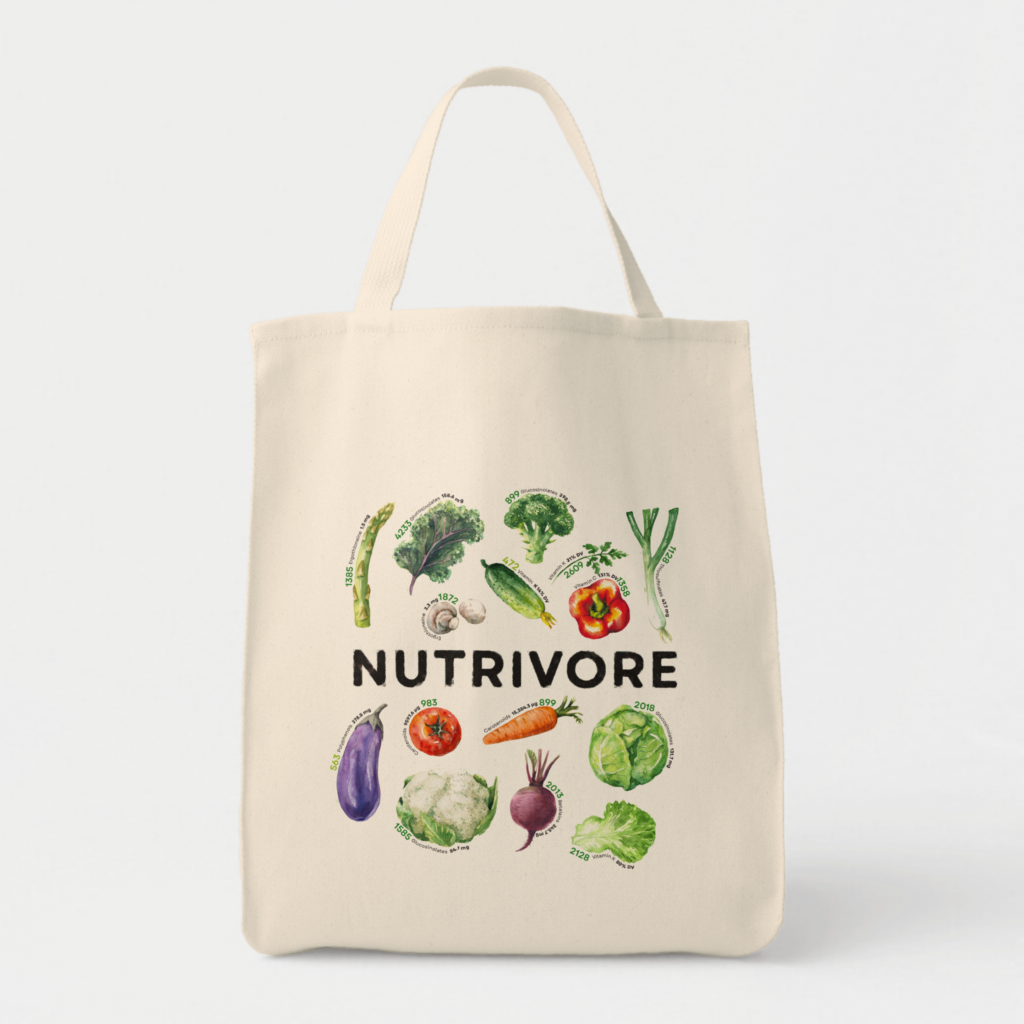
Merch and Household Goods
Check out our collection of practical and nerdtastic T-shirts, totes, and more!
How Much Oleic Acid Do We Need?
As a non-essential fat, no recommended dietary intake exists for oleic acid. In general, consuming 1 to 2 tablespoons of oleic acid-rich oils (such as olive oil or avocado oil) daily may deliver enough of this fatty acid to produce some of the health benefits seen in studies! A good daily goal is 20 grams of monounsaturated fats.
There’s no known toxicity for oleic acid, even in very large quantities, but a laxative effect may occur from very high intakes (50 – 100 g in one sitting).
Nutrient Daily Values
Nutrition requirements and recommended nutrient intake for infants, children, adolescents, adults, mature adults, and pregnant and lactating individuals.
Best Food Sources of Monounsaturated Fatty Acids
The following foods have high concentrations of monounsaturated fatty acids (the most common of which is oleic acid), containing at least 10 grams per serving, making them our best food sources of this heart-healthy fat!
Want to know the top 500 most nutrient-dense foods?
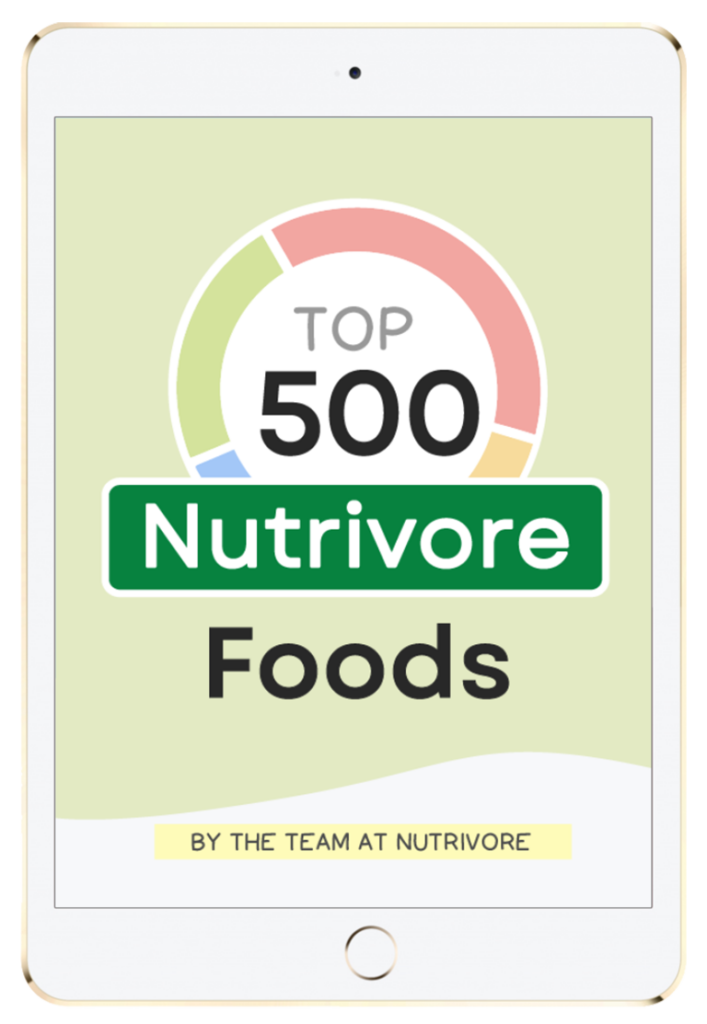
Top 500 Nutrivore Foods
The Top 500 Nutrivore Foods e-book is an amazing reference deck of the top 500 most nutrient-dense foods according to their Nutrivore Score. Think of it as the go-to resource for a super-nerd, to learn more and better understand which foods stand out, and why!
If you are looking for a quick-reference guide to help enhance your diet with nutrients, and dive into the details of your favorite foods, this book is your one-stop-shop!
Buy now for instant digital access.
Good Food Sources of Monounsaturated Fatty Acids
The following foods are also excellent or good sources of monounsaturated fatty acids (the most common of which is oleic acid), containing at least 2 grams (and up to 10 grams) per serving.
Easily track your servings of Nutrivore Foundational Foods!

The Nutrivore Weekly Serving Matrix
The Nutrivore Weekly Serving Matrix digital resource is an easy-to-use and flexible weekly checklist designed to help you maximize nutrient-density and meet serving suggestions of Nutrivore foundational foods, all without having to weigh or measure your foods!
Includes a 22-page instructional guide and downloadable interactive guides.
Buy now for instant digital access.
Citations
Expand to see all scientific references for this article.
Alcubierre N, Navarrete-Muñoz EM, Rubinat E, Falguera M, Valls J, Traveset A, Vilanova MB, Marsal JR, Hernandez M, Granado-Casas M, Martinez-Gonzalez D, Jurjo C, Franch-Nadal J, Vioque J, Mauricio D. Association of low oleic acid intake with diabetic retinopathy in type 2 diabetic patients: a case-control study. Nutr Metab (Lond). 2016 Jun 4;13:40. doi: 10.1186/s12986-016-0099-5.
Cardoso CR, Favoreto S Jr, Oliveira LL, Vancim JO, Barban GB, Ferraz DB, Silva JS. Oleic acid modulation of the immune response in wound healing: a new approach for skin repair. Immunobiology. 2011 Mar;216(3):409-15. doi: 10.1016/j.imbio.2010.06.007.
Carrillo C, Cavia Mdel M, Alonso-Torre SR. Antitumor effect of oleic acid; mechanisms of action: a review. Nutr Hosp. 2012 Nov-Dec;27(6):1860-5. doi: 10.3305/nh.2012.27.6.6010.
de Souza J, Prom CM, Lock AL. Altering the ratio of dietary palmitic and oleic acids affects nutrient digestibility, metabolism, and energy balance during the immediate postpartum in dairy cows. J Dairy Sci. 2021 Mar;104(3):2910-2923. doi: 10.3168/jds.2020-19312.
Dokko RC, Cho BH, Chung BH. Cellular uptake of stearic, oleic, linoleic, and linolenic acid and their effects on synthesis and secretion of lipids in Hep-G2 cells. Int J Biochem Cell Biol. 1998 Jan;30(1):65-76. doi: 10.1016/s1357-2725(97)00097-6.
Gaetani S, Fu J, Cassano T, Dipasquale P, Romano A, Righetti L, Cianci S, Laconca L, Giannini E, Scaccianoce S, Mairesse J, Cuomo V, Piomelli D. The fat-induced satiety factor oleoylethanolamide suppresses feeding through central release of oxytocin. J Neurosci. 2010 Jun 16;30(24):8096-101. doi: 10.1523/JNEUROSCI.0036-10.2010.
Giulitti F, Petrungaro S, Mandatori S, Tomaipitinca L, de Franchis V, D’Amore A, Filippini A, Gaudio E, Ziparo E, Giampietri C. Anti-tumor Effect of Oleic Acid in Hepatocellular Carcinoma Cell Lines via Autophagy Reduction. Front Cell Dev Biol. 2021 Feb 5;9:629182. doi: 10.3389/fcell.2021.629182.
Granados N, Amengual J, Ribot J, Palou A, Bonet ML. Distinct effects of oleic acid and its trans-isomer elaidic acid on the expression of myokines and adipokines in cell models. Br J Nutr. 2011 Apr;105(8):1226-34. doi: 10.1017/S0007114510004885.
Haeiwa H, Fujita T, Saitoh Y, Miwa N. Oleic acid promotes adaptability against oxidative stress in 3T3-L1 cells through lipohormesis. Mol Cell Biochem. 2014 Jan;386(1-2):73-83. doi: 10.1007/s11010-013-1846-9.
Jiang L, Wang W, He Q, Wu Y, Lu Z, Sun J, Liu Z, Shao Y, Wang A. Oleic acid induces apoptosis and autophagy in the treatment of Tongue Squamous cell carcinomas. Sci Rep. 2017 Sep 12;7(1):11277. doi: 10.1038/s41598-017-11842-5.
Liu X, Kris-Etherton PM, West SG, Lamarche B, Jenkins DJ, Fleming JA, McCrea CE, Pu S, Couture P, Connelly PW, Jones PJ. Effects of canola and high-oleic-acid canola oils on abdominal fat mass in individuals with central obesity. Obesity (Silver Spring). 2016 Nov;24(11):2261-2268. doi: 10.1002/oby.21584.
López-Gómez C, Santiago-Fernández C, García-Serrano S, García-Escobar E, Gutiérrez-Repiso C, Rodríguez-Díaz C, Ho-Plágaro A, Martín-Reyes F, Garrido-Sánchez L, Valdés S, Rodríguez-Cañete A, Rodríguez-Pacheco F, García-Fuentes E. Oleic Acid Protects Against Insulin Resistance by Regulating the Genes Related to the PI3K Signaling Pathway. J Clin Med. 2020 Aug 12;9(8):2615. doi: 10.3390/jcm9082615.
Madigan C, Ryan M, Owens D, Collins P, Tomkin GH. Dietary unsaturated fatty acids in type 2 diabetes: higher levels of postprandial lipoprotein on a linoleic acid-rich sunflower oil diet compared with an oleic acid-rich olive oil diet. Diabetes Care. 2000 Oct;23(10):1472-7. doi: 10.2337/diacare.23.10.1472.
Menendez JA, Lupu R. Mediterranean dietary traditions for the molecular treatment of human cancer: anti-oncogenic actions of the main olive oil’s monounsaturated fatty acid oleic acid (18:1n-9). Curr Pharm Biotechnol. 2006 Dec;7(6):495-502. doi: 10.2174/138920106779116900.
Miklankova D, Markova I, Hüttl M, Stankova B, Malinska H. The Different Insulin-Sensitising and Anti-Inflammatory Effects of Palmitoleic Acid and Oleic Acid in a Prediabetes Model. J Diabetes Res. 2022 Sep 13;2022:4587907. doi: 10.1155/2022/4587907.
Palomer X, Pizarro-Delgado J, Barroso E, Vázquez-Carrera M. Palmitic and Oleic Acid: The Yin and Yang of Fatty Acids in Type 2 Diabetes Mellitus. Trends Endocrinol Metab. 2018 Mar;29(3):178-190. doi: 10.1016/j.tem.2017.11.009.
Pastor R, Bouzas C, Tur JA. Beneficial effects of dietary supplementation with olive oil, oleic acid, or hydroxytyrosol in metabolic syndrome: Systematic review and meta-analysis. Free Radic Biol Med. 2021 Aug 20;172:372-385. doi: 10.1016/j.freeradbiomed.2021.06.017.
Rehman K, Haider K, Jabeen K, Akash MSH. Current perspectives of oleic acid: Regulation of molecular pathways in mitochondrial and endothelial functioning against insulin resistance and diabetes. Rev Endocr Metab Disord. 2020 Dec;21(4):631-643. doi: 10.1007/s11154-020-09549-6.
Sales-Campos H, Souza PR, Peghini BC, da Silva JS, Cardoso CR. An overview of the modulatory effects of oleic acid in health and disease. Mini Rev Med Chem. 2013 Feb;13(2):201-10.
Salvadó L, Coll T, Gómez-Foix AM, Salmerón E, Barroso E, Palomer X, Vázquez-Carrera M. Oleate prevents saturated-fatty-acid-induced ER stress, inflammation and insulin resistance in skeletal muscle cells through an AMPK-dependent mechanism. Diabetologia. 2013 Jun;56(6):1372-82. doi: 10.1007/s00125-013-2867-3.
Schwingshackl L, Hoffmann G. Monounsaturated fatty acids, olive oil and health status: a systematic review and meta-analysis of cohort studies. Lipids Health Dis. 2014 Oct 1;13:154. doi: 10.1186/1476-511X-13-154.
Shekari S, Fathi S, Roumi Z, Akbari ME, Tajadod S, Afsharfar M, Hasanpour Ardekanizadeh N, Bourbour F, Keshavarz SA, Sotoudeh M, Gholamalizadeh M, Nemat Gorgani S, Shafaei Kachaei H, Alizadeh A, Doaei S. Association between dietary intake of fatty acids and colorectal cancer, a case-control study. Front Nutr. 2022 Oct 3;9:856408. doi: 10.3389/fnut.2022.856408.
Terés S, Barceló-Coblijn G, Benet M, Alvarez R, Bressani R, Halver JE, Escribá PV. Oleic acid content is responsible for the reduction in blood pressure induced by olive oil. Proc Natl Acad Sci U S A. 2008 Sep 16;105(37):13811-6. doi: 10.1073/pnas.0807500105.
Tutunchi H, Ostadrahimi A, Saghafi-Asl M, Maleki V. The effects of oleoylethanolamide, an endogenous PPAR-α agonist, on risk factors for NAFLD: A systematic review. Obes Rev. 2019 Jul;20(7):1057-1069. doi: 10.1111/obr.12853.
Tutunchi H, Ostadrahimi A, Saghafi-Asl M. The Effects of Diets Enriched in Monounsaturated Oleic Acid on the Management and Prevention of Obesity: a Systematic Review of Human Intervention Studies. Adv Nutr. 2020 Jul 1;11(4):864-877. doi: 10.1093/advances/nmaa013.
Tutunchi H, Saghafi-Asl M, Ostadrahimi A. A systematic review of the effects of oleoylethanolamide, a high-affinity endogenous ligand of PPAR-α, on the management and prevention of obesity. Clin Exp Pharmacol Physiol. 2020 Apr;47(4):543-552. doi: 10.1111/1440-1681.13238.
Vassiliou EK, Gonzalez A, Garcia C, Tadros JH, Chakraborty G, Toney JH. Oleic acid and peanut oil high in oleic acid reverse the inhibitory effect of insulin production of the inflammatory cytokine TNF-alpha both in vitro and in vivo systems. Lipids Health Dis. 2009 Jun 26;8:25. doi: 10.1186/1476-511X-8-25.
Wang Q, Liu R, Chang M, Zhang H, Jin Q, Wang X. Dietary oleic acid supplementation and blood inflammatory markers: a systematic review and meta-analysis of randomized controlled trials. Crit Rev Food Sci Nutr. 2022;62(9):2508-2525. doi: 10.1080/10408398.2020.1854673.



